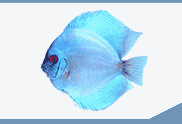

 |
||||||||||||
 |
||||||||||||
| Aeromonas Infections | ||||||
| Ruth Francis-Floyd | ||||||
Aeromonas infections are caused by bacteria which are present in the water all of the time. Usually, when fish get sick with an Aeromonas infection, something has happened to make them susceptible to bacterial invasion. There are several species of Aeromonas which can infect fish. The first is Aeromonas salmonicida, which causes a disease called furunculosis in salmon and trout. This bacteria is not usually of concern for producers of warmwater fish and will not be discussed further in this publication. The two species of Aeromonas which do cause disease in warmwater fish are Aeromonas hydrophila and Aeromonas sobria. The difference between these two bacteria is of greater interest to scientists than of practical importance to producers; thus, they will be referred to collectively as Aeromonas infections or Motile Aeromonas Septicemia (MAS). Aeromonas infections are probably the most common bacterial disease diagnosed in cultured warmwater fish. Usually, mortality rates are low (10% or less) and losses may occur over a period of time (2 to 3 weeks or longer). In these instances, some factor; usually stress, has caused the fish to become more susceptible to the bacteria. Common sources of stress are poor water quality, overcrowding, or rough handling. Some strains of Aeromonas are more virulent, which means that they possess special properties which enable them to cause more serious disease outbreaks. If these more damaging strains become endemic in a population of fish (which means that they are there all of the time and the fish develop an immunity to them), it becomes difficult to introduce new fish into the water body without suffering major losses of newly-stocked fish. Signs of Aeromonas infection There is no single physical or behavioral sign specific for Aeromonas infections. Infected fish frequently have: small pinpoint hemorrhages at the base of the fins or on the skin, distended abdomens, and protruding eyes. Internal signs include: fluid in the abdomen, swollen liver and spleen, and the intestines are distended and fluid-filled. Submission of suspect fish to a diagnostic laboratory It is important to submit fish suspected of being infected with Aeromonas to a diagnostic laboratory to confirm the disease, and to determine the antibiotic sensitivity of the strain of Aeromonas causing the problem. In addition, because Aeromonas is a stress-mediated disease, it is not unusual to find that infected fish are heavily parasitized or concurrently infected with another systemic disease agent. Contact your county extension agent for assistance and information on where and how to submit samples for diagnostic services. Management of an Aeromonas outbreak When MAS, or any bacterial infection, is suspected in your fish, you should immediately submit a live, sick fish to the nearest diagnostic facility. If Aeromonas is diagnosed, you need to know what legal drug the isolate is sensitive to and whether or not other infectious agents are present. There are two antibiotics legal for the treatment of bacterial diseases of channel catfish. Both of these are administered in the feed. The first, Terramycin, has been available for many years and many strains of Aeromonas are resistant to it. If the bacteria is resistant to the drug then there is no benefit attained by feeding that medication. Terramycin~, an oxytetracycline product, is available in sinking feed only, and is fed for 10 days followed by a 21-day withdrawal time. The other product, Romet-30 , a potentiated sulfonamide, has only been available since 1985. It is available in a floating feed, and is fed for 5 days, followed by a 3-day withdrawal period. The withdrawal period is the time you need to wait after feeding the medicated feed for the last time until the fish can be sold for human consumption. In many cases, it may not be necessary to treat Aeromonas infections with medicated feeds. For example, if fish are heavily parasitized, they may resist the bacterial disease if the parasites are removed. Similarly, if disease susceptibility is attributed to poor water quality, then correction of the basic husbandry problem could result in a resolution of the bacterial disease outbreak. Keep in mind that the purpose of antibiotics is to keep disease-causing bacteria at bay long enough for the fish to heal itself. In addition, if the affected system is an indoor or closed system, good sanitation is essential to decrease the number of bacteria in the system. more ... |
 |
|||||
| About Us :: Message Board :: Chat | |||||
| Library :: Photo Gallery :: Links & Resources :: Breeders & Sponsors :: Merchandise | |||||
| Website designed by: EthanCote.com | © 2001-2004, SimplyDiscus.com. All Rights Reserved. | ||||